TODAY - Twitter Chat: General Mills with TriplePundit and CSRwire
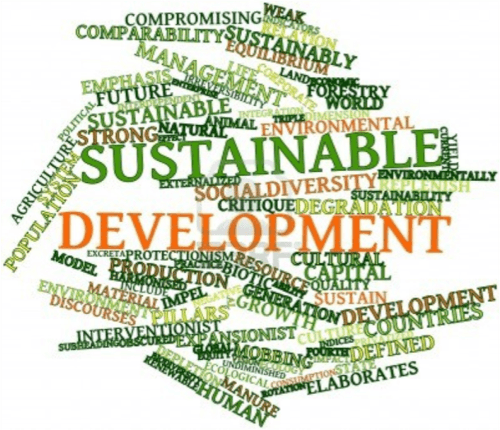

Join #GenMillsSusty on Apr. 23, 2014 at 12pm PST.
How can food companies source their ingredients most sustainably – and protect the resources and communities upon which their businesses depend?
On April 16th, General Mills marked its 44th anniversary with the release of its 2014 CSR report - voluntarily disclosing progress on its social and environmental goals - including sustainably sourcing 100 percent of its 10 priority ingredients by 2020. That represents more than 50 percent of the company’s annual raw material purchases and includes oats, wheat, dairy, palm oil, cocoa and vanilla, among others.
The challenge ahead is significant. From finding the right partners to improving farmers’ profitability and the sustainability of their farming techniques, General Mills will need to not only focus on immediate social and environmental impact but also on sustaining its business for the long-term?
To discuss the weight of this commitment and how it aims to move forward, General Mills Chief Sustainability Officer Jerry Lynch and General Mills Sourcing Director Steve Peterson will join TriplePundit and CSRwire for a live Twitter chat on April 23, 2014.
What does sustainable sourcing involve for a global company like General Mills? Moderated by Nick Aster, Founder and Publisher of TriplePundit, and Aman Singh, CSRwire’s Editorial Director, the discussion will explore several subthemes including:
- What is the food giant doing to address its impact upstream?
- With 99% of its water usage occurring outside its operations, how can General Mills include others in the supply chain – farmers, other companies, etc.— in its sustainability goals?
- How does a supply chain spread across the developed and developing world shift General Mills’ sustainable sourcing approach?
Here’s what you need to know:
- Date: April 23, 2014 - 12pm PST / 3pm EST
- Hashtag: #GenMillsSusty
- Speakers: @gmills_jerry @gmills_steve
- Moderators: @AmanSinghCSR @CSRwire @nickaster @triplepundit
To register, send out the following tweet: I'll join @gmills_jerry @CSRwire & @triplepundit to discuss what it takes 2 reach 100% #susty sourcing http://bit.ly/GenMillsSusty #GenMillsSusty
Got a question for our panel? Send it to [email protected].
We look forward to seeing you on Twitter at #GenMillsSusty on April 23rd!
Less plastic’s fantastic for Unilever’s Dove


Dove Body Wash bottles will contain a minimum 15% less plastic as a result of a newly developed packaging technology launched by Unilever.
The Anglo Dutch toiletries giant intends to widen the availability of this technology to be used more broadly across the industry. The new technology represents another contribution to the target set out in the Unilever Sustainable Living Plan to halve its waste footprint by 2020.
The MuCell Technology for Extrusion Blow Moulding (EBM) was created in collaboration with two of Unilever’s global packaging suppliers, ALPLA and MuCell Extrusion. By using gas-injection to create gas bubbles in the middle layer of the bottle wall, it reduces the density of the bottle and the amount of plastic required.
The technology will be deployed first in Europe across the Dove Body Wash range, before rolling the technology out. With up to 33 million Dove Body Wash bottles sold across Europe in 2013, the new technology stands to save up to 275 tonnes of plastic a year; whereas a full roll-out across every Unilever product and packaging format could save up to 27,000 tonnes of plastic.
Unilever will waive specific exclusivity rights by January 2015 so that other manufacturers can start to use the technology across their brands and products.
On 28 April 2014, the Unilever Sustainable Living Report 2013 will be published, and will confirm that Unilever’s total footprint from packaging waste to landfill has reduced (-11%) as a result of efficient pack designs and the disposal of sauce brands with large waste footprints.
The Link Between Walmart, Food Stamps and CSR
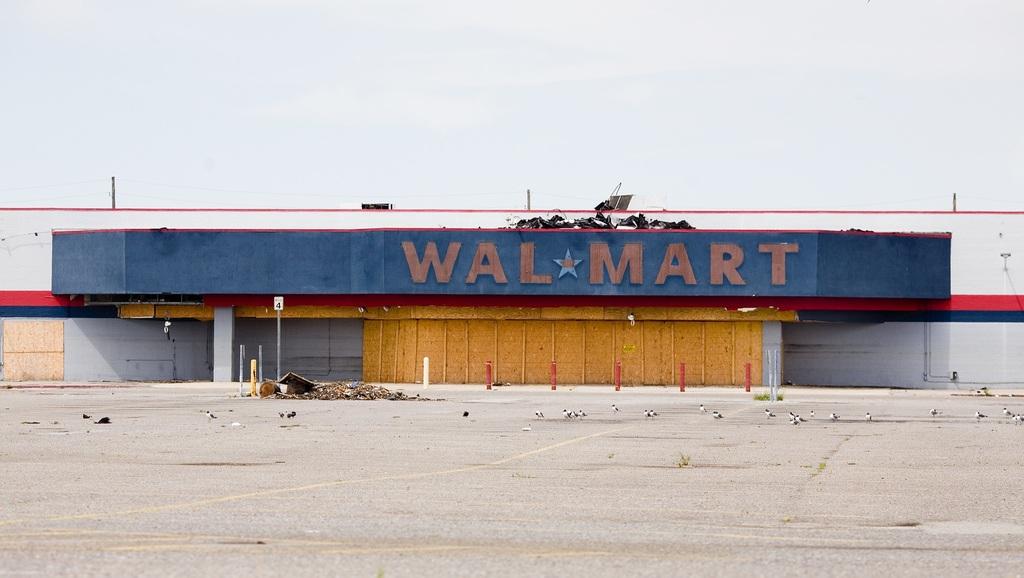

In Jacob Kornbluth’s film “Inequality for All," entrepreneur and venture capitalist Nick Hanauer says: “The most pro-business thing you can do is to help middle-class people thrive.”
I thought about this quote while reading a new report, “How Taxpayers Subsidize America’s Biggest Employer and Richest Family,” published on April 15 (aka Tax Day) by Americans for Tax Fairness, a coalition of progressive organizations. The report estimates that Walmart workers relying on public assistance programs due to low wages cost American taxpayers $6.2 billion a year.
Another interesting figure presented in the report was that Walmart has captured 18 percent of the SNAP (food stamps program) market. Using that figure, the authors estimate that “the company accounted for $13.5 billion out of $76 billion in food stamp sales in 2013."
It got me thinking that if a substantial number of Walmart’s employees in the U.S. (1.3 million in total) receive food stamps, then the company actually profits twice from paying low-wages – not only does it reduce its costs, but it also increases its income by receiving food stamps from its employees shopping at Walmart.
But is this really the case? Is Walmart that far away from the vision Nick Hanauer offers in quote? And if so, what does it say about its commitment to corporate responsibility or its “responsibility to lead”?
First, I wanted to check how many Walmart employees actually receive food stamps.
As Krissy Clark reported on Marketplace’s excellent series (in collaboration with Slate) “The Secret Life of a Food Stamp,” there are no federal numbers on where employed food stamp recipients work. Nevertheless we can make an estimation based on Clark’s report that in Ohio, where the state keeps a list of the top 50 companies with the most workers on food stamps, about 15 percent of Walmart’s workforce receives food stamps in the state. If this is the case elsewhere in the U.S., then 15 percent of Walmart employees, or 245,000 people and their families, receive food stamps.
The second question is how much Walmart benefits from the food stamps its employees receive. The average monthly food stamp benefit per household in 2013 was about $275, or $3,300 annually. Multiply it by 245,000 households and you get more than $800 million. On average, food stamp recipients spend 18 percent of their food stamps at Walmart – if this is the case with Walmart employees, then the total amount they would spend in Walmart stores is about $145 million. Since they have employee discounts, I would assume these employees spend more at Walmart -- but it's hard to guesstimate just how much.
Based on these estimations I believe Walmart employees received last year $800 million in food stamps from the federal government and spent somewhere beyond $145 million of it in Walmart.
Does this situation make any sense? Not really. After all, Walmart made $17 billion in profits in 2013. You might wonder if Walmart could still be profitable if it offered all of its employees a decent pay so none of them could qualify for food stamps.
Marketplace’s Andrew Bouve did the math and found out that Walmart would need to raise the average pay of its cashiers, for example, from an estimated $8.81 an hour to $13.63 an hour for them to no longer be eligible for food stamps. The overall cost of such a raise would be $4.8 billion, or 28.2 percent of the company’s profits. The company could also pass these costs to the consumers by raising its prices by 1.4 percent on average.
It’s not likely that Walmart would be interested in any of this. If you listen to the company’s comments on Marketplace’s series, you learn that Walmart thinks that there’s nothing wrong with the salaries it pays. “It’s really not where you start; it's where you end up,” David Tovar, Walmart’s vice president of communications explained, adding that the number of Walmart employees on food stamps is a reflection of the state of the U.S. economy, including the country’s growing food stamp use.
Tovar may be right, but isn’t it also a result of the low wages Walmart pays to many of its employees? After all, even in the retail business you can pay entry-level employees higher salaries and still be very successful as Costco proves, paying $11.50 to $12 per hour to starting hourly workers, with increases in pay after just 800 hours of work.
And what about Walmart’s overall approach to food stamps? “We would love nothing more than a day when we didn't have to have programs like that,” Tovar told Marketplace. I believe Tovar really means it, but I’m not sure if it reflects the company’s overall approach to food stamps given that they may represent over 4 percent of the company’s sales.
You can find an indication of Walmart’s dependence on food stamps in its latest Wal-Mart's 10-K report, issued late last month. As Michael Hiltzik reported on LA Times, among the material risk factors Walmart disclosed to its share holders you can find "changes in the amount of payments made under the Supplement Nutrition Assistance Plan and other public assistance plans, (and) changes in the eligibility requirements of public assistance plans."
So while Walmart might say it hopes to see the day we don’t need food stamps anymore, it seems like it is actually worried about such a day and its consequences on the company's bottom line. The fact that Walmart also contributes to this trend with about 245,000 of its employees receiving food stamps also calls into question its corporate responsibility claims.
A company that believes to have the responsibility to lead should show at the very least how it helps its employees make ends meet without the assistance of food stamps. Until then I would take its claim to have a “responsibility to lead” with a grain of salt.
Image credit: Thomas Hawk, Flickr Creative Commons
Raz Godelnik is an Assistant Professor of Strategic Design and Management at Parsons The New School of Design. You can follow Raz on Twitter.
3p Interview: A Conversation With an Electric Road Warrior
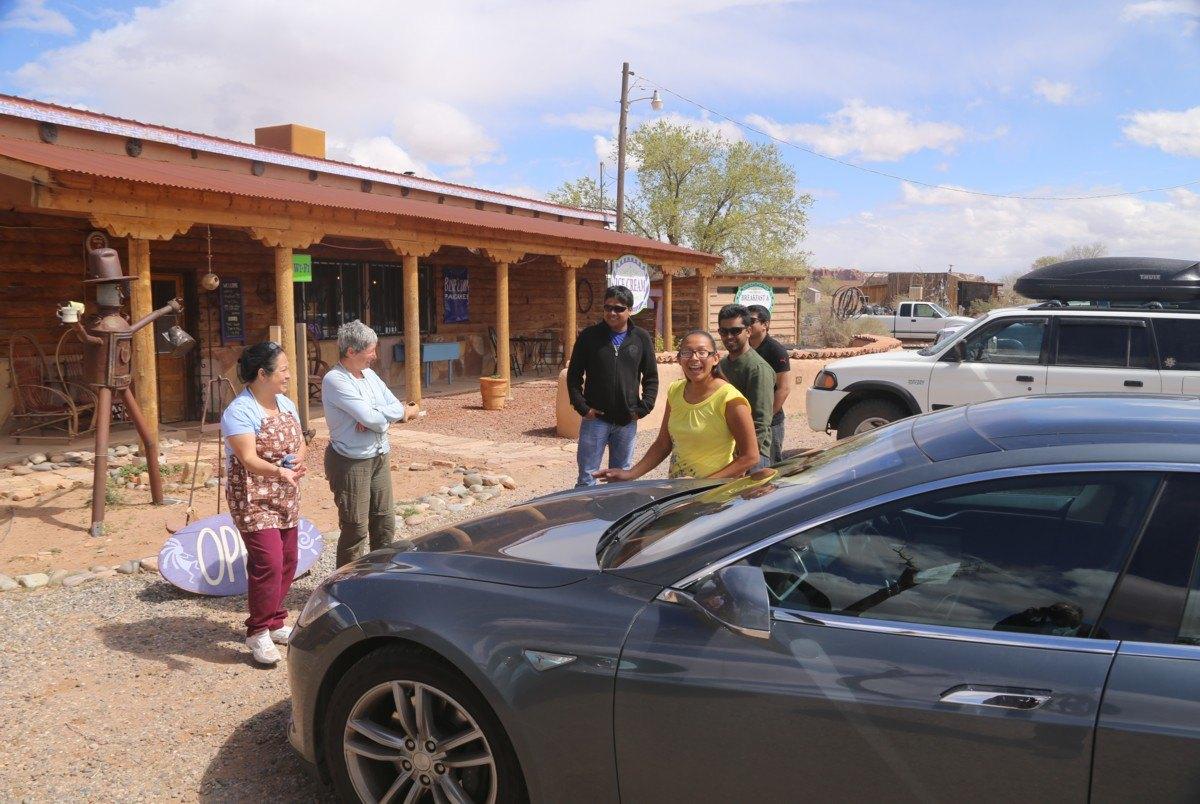

Norman Hajjar is a man with a penchant for travel, adventure and a strong sense of curiosity. Years ago, when he lived in Venice, Italy, he wondered what it would be like to get off the familiar canals and see some of the surrounding area by boat. He wanted to get a feel for what the place was really like. He took 10 days and an old boat to find out, even though he knew next to nothing about boating. What he found was that he spent a great deal of time worrying about when and where he could fill up his gas tank so he wouldn’t end up stranded in some dark lagoon.
Years later, he developed a keen interest in electric vehicles. Having worked on Madison Avenue, he left to start Plug Insights, a research division of electric vehicle software and analytics company Recargo, Inc. Now he spends his days collecting information about these cars and the people that drive them, providing reports to those who are interested.
So it makes sense that he would set out to set a new record with a 12,000+ mile road trip in a Tesla Model S, to get off the beaten track once again and see what it would be like to see America “through the windshield of an EV." He was wondering what kind of reaction people in remote areas would have to a car like this. Perhaps you could say he has taken it upon himself to go out and survey the boundary between today and tomorrow, to get a feel for how far we’ve come in the transformation of transportation and how far we still have to go.
When I caught up with Norm he was in southern Virginia. He had come down the coast to Los Angeles, then to Arizona, New Mexico, Colorado, Utah, Wyoming; then he headed to South Dakota, across the Great Plains, into Ohio. From there it was New York and Portland, Maine, then down the Eastern seaboard. You can follow Norm on his journey using this route map or see his location in real time using this live GPS tracker.
I asked him if he had plans to pass through my area, but he said the “supercharger archipelago” did not go that way. This topic soon changed to the weather, which was great both here and there. It was the first good weather he’d seen.
Norm Hajjar: I’ve seen every kind of weather imaginable. I had a blizzard in Colorado, sandstorms in Wyoming, 50-mil- an-hour crosswinds in New Mexico, torrential rains, you name it.
Triple Pundit: So what else are you seeing, besides very diverse weather?
NH: I’m going through a lot of areas where EVs are uncommon. There is a lot of curiosity but also a sense that people are looking at the future. I think people are really looking forward to the day when they can abandon their gas vehicles.
3p: It’s coming.
NH: Yeah. I see a lot of astonishment when I tell people I am going 12,000 miles. I tell them about the supercharger network and how that enables this trip. But that’s just the first shoe to drop. As the fast-charging infrastructure builds out, things like this will no longer be astonishing.
3p: Why are you doing this?
NH: One reason is to illustrate the power of what is already possible because of what Tesla has done, and also to point out how we need more strategic investment in more Level 3 fast charging infrastructure, to make this category blossom.
3p: So do you see your mission as trying to demystify the whole thing?
NH: Yes, to show that it’s not a quirky or eccentric means of transport. I think the perception is that these are still experimental, and not ready for prime time. If others were to take on the same attitude as Tesla, we could really begin to explode the category.
3p: What is your relationship with Tesla?
NH: There is no relationship at all. I’ve not spoken with them personally, about the trip. They will tweet encouragement, but that’s about it. This is not about Tesla. This is about EVs in general. Tesla just happens to make the first EV that can do something like this. But it certainly won’t be the last.
3P: You can only do this with a Tesla because…
NH: Well, there are two reasons. There’s the vehicle range. A mid-range EV like the Nissan Leaf is limited to 80 to 90 miles between charges. That’s simply not enough range for a trip like this. Then there’s the charging infrastructure. Mid-range EVs could be suited to regional travel, which is the most common, if the infrastructure was there. In Oregon there is the electric highway, which is studded with charging stations that you can travel freely, all around the area, in a Leaf. There is a similar situation in the U.K. The infrastructure is key. Otherwise it’s like having a hi-def TV, with no hi-def signal available.
We did some research that shows that the longest trip taken by someone with a Nissan Leaf is 96 miles. Clearly these drivers are not ranging outside the circle that the battery affords them. Consequently, they’re not getting the most out of their machines. It’s also the reason many people reject the vehicle as not having the utility they need.
3p: If you had the infrastructure, you’d have to stop every couple of hours to charge up, right?
NH: But you could charge up that car in under an hour.
3p: Okay, so an hour of charging for a two-hour trip. Not exactly ideal.
NH: Our research shows that people are warm to the idea of stopping for a sandwich while they charge up their car -- if they could do it, but in most cases they can’t.
3p: What’s the farthest you've gone on a charge on this trip?
NH: About 220 miles, which is dictated, in part, by the spacing of the superchargers. They are laid out to serve those with the smaller of the two batteries they sell (60kW vs. 80 kW). What’s missing, other than what Tesla has done, is a top-down plan for where these fast-chargers are sited.
3p: Can any car use a Tesla supercharger?
NH: No, only Tesla cars can use them. There’s also the CHAdeMO charging standard, which works with the Leaf and several other Japanese cars. Tesla is coming out [with an] an adapter that will let their cars use these chargers. There is a third standard for vehicles like the BMW i3 that are just starting to appear. A number of American car companies will be following this standard. So there is a bit of a format war going on.
3p: How long did it take you to charge back up after 200 miles?
NH: It’s about an hour to charge on average.
3p: So are you trying to make the case that we should consider EVs equivalent to gasoline vehicles, even for long-distance travel?
NH: I’m trying to make the case that they shouldn’t be thought of as specialty vehicles at all, at least not the Tesla. If you had the right charging infrastructure in a metropolitan area or a region, then they wouldn’t be.
3p: Is the electricity free?
NH: Once you’ve paid to enable the supercharging feature, which cost around $2,000. But I figure that on this trip alone, I would have spent $1,200 to $1,400 [on gas], which comes close to paying for that.
3p: Then you just have to pay for the car.
NH: Yes, but as you know, a lower priced version of the Tesla is on its way, with other companies coming along as well. Soon EVs with ranges over 150 miles will be quite common. That will be a true inflection point.
3p: Most people I know, who are in a two-car situation, are looking at one EV and one car with gas capability for longer trips.
NH: Our research shows that the majority of Leaf owners have a second, gasoline-powered vehicle. But more than 30 percent of them said that if there was a fast-charging infrastructure out there that was highly available and reliable, they would get rid of their gas backup vehicle. Think of how that increases the value of the EV.
3p: But in a two-car situation, don’t you think we’ll see a lot of people with one of each?
NH: Yes, either that or a plug-in hybrid, like a Volt or a plug-in Prius.
3p: So in your research, what was the primary reasons people said they bought an EV?
NH: Mostly to avoid gasoline and [for] other environmental benefits. There is a very strong environmental culture in this group.
3p: People are buying Teslas for reasons other than the environment, but these are high-end consumers. The question is when that starts to happen among mainstream consumers and lower-priced EVs.
NH: That will be a great day. We will be tracking those trends. I predict that as the circle widens, the percentage of people doing this for environmental reasons will drop. That will mean we have tapped into a more mainstream audience.
3p: So are you collecting data on this trip? Are you trying to feel the pulse of what Americans are thinking about cars?
NH: Yes, definitely. My background is Madison Avenue, where I was a strategic planner. There I learned to listen in an unbiased way to what people are saying and how they are saying it. So this has been very nourishing in that way, both from people I meet along the way, and those fellow Tesla owners I meet at the superchargers, who also have stories to tell. Many of them are just in love with the way the vehicle performs. They could care less what fuel it runs on.
3p: So what’s the most surprising thing you’ve heard, so far?
NH: Probably the rabid interest I find among people I meet along the way, who want to engage me in conversation about this car. The depth of their curiosity, in many cases the wrongheadedness of their beliefs, and how quickly they are able to be redirected once you give them the facts. People are shocked to learn that this car is able to make a journey like this. Because I’m going for a world record, I am obliged to stop and get city officials to sign letters as witnesses. These folks all have a deep interest in seeing that these types of vehicles are being used in their municipalities. They see this as an important thing for their agendas for the years ahead.
So, my company Plug Insights, which is the research division of Recargo, has a Plugshare app which is in the hands of over 100,000 EV drivers. That list gives us access to these people to opt-into our customer panel. This panel now has over 9,000 people on it. That allows us to look at very specific sectors to improve our understanding. We publish syndicated studies for sale and also do custom research for automakers and others who are interested in using that large panel for learning about the best way to market these cars.
3p: So what happens if you decided to change your route? It’s not so easy given the planning and logistics required.
NH: Well the worst thing would be that I would have to rely on a slower Level 2 charger, which means I would have to stay overnight to recharge.
3p: So that’s a good thing to point out to people. You can always go to a regular outlet to charge up, it just takes a lot longer to do it. What other tales of the road would you like to share?
NH: I blew into the tiny town south of Moab, [Utah] with a population of about 300, and there was a little shop with an espresso sign in the window, so I stopped in. When the people there heard what it was I was doing, the whole place emptied out -- patrons, employees, owner, everyone. They all came out surrounded the vehicle, got in, started honking the horn. It was really a gas, and very typical of the kinds of experiences I’ve been having. People are really excited about this technology.
Department of the Interior Launches Landscape Mitigation Strategy


Launching a landscape-based mitigation strategy on April 10, Secretary of the Interior Sally Jewell took a bold step forward in the management and stewardship of U.S. public lands. Harnessing a variety of new tools and taking a holistic, science-driven and collaborative public-private sector approach to public lands management and stewardship, the Department of the Interior's landscape-scale mitigation strategy aims to reconcile the often conflicting goals of development and conservation.
With the new strategy, the department aims to encourage the dual objectives of smart development and conservation by providing “clarity and consistency to more effectively avoid, minimize and compensate for impacts on public lands.”
As Secretary Jewell explained in a press release: “This strategy outlines the key principles and actions we need to take to successfully shift from a reactive, project-by-project approach to more predictable and effective management of the lands and resources that we manage on behalf of the American public.
“The goal is to provide greater certainty for project developers when it comes to permitting and better outcomes for conservation through more effective and efficient project planning. Through advances in science and technology, advance planning, and collaboration with stakeholders, we know that development and conservation can both benefit – and that’s the win-win this mitigation strategy sets out to achieve.”
Conservation and development: Can the twain ever meet?
Secretary Jewell's launch of Interior's new landscape-scale mitigation strategy comes at a pivotal point in the evolution of U.S. conservation and public lands management, occurring coincidentally with a confrontation between Clark County, Nev. rancher Cliven Bundy and supporters with Bureau of Land Management officials.
The juxtaposition of the two events poignantly highlights the longstanding, ongoing tensions between federal, state, and local government agencies and officials and private landowners throughout the Western U.S., as well as the all-too-often irreconcilable conflicting interests and trade-offs posed at the nexus of ecological conservation and economic development.
It's exactly those tensions, trade-offs and conflicts of interest that Secretary Jewell and Interior aim to reconcile with the launch of the landscape-scale mitigation strategy. In carrying it out, the department is harnessing the latest technological tools and scientific methods to take a broader, holistic approach to management and stewardship of U.S. public lands. The science is being used to inform policy and decision-making in an open, inclusive and collaborative dialogue among stakeholders at every level.
“We need to use the tools that are available to us to think of our landscapes in a way that sets them up for the long-term future,” Secretary Jewell stated in an online video. “We are seeing the impacts of climate change, we are seeing the impacts of invasive species.
“Our lands are being challenged, and yet we know that our economy also runs on development. This gives us an opportunity to achieve some of the objectives that we need to in a changing climate, in a time when we've got more people that need places to breathe, but also that helps drive economic activity that is so important to our country.”
A landscape-scale approach for smart development
Four priority areas of ongoing and future work were outlined in the release of Interior's new strategy: geospatial assessments, landscape-level strategies, compensatory mitigation programs, and monitoring and evaluation. Near-term actions the department will take to put the report’s recommendations into practice are also identified.
As Secretary Jewell elaborated:
“What this mitigation strategy does is it says to those who are interested in developing, we want you to look not on a project-by-project basis, but at a whole landscape. If you're going to develop in one area and it has an impact – which development generally does – here's the area of highest potential, and here's where we'd like you to put your mitigation dollars.”
Among the new technology the department is putting to use in the effort to take a broader, holistic, landscape-scale approach to conservation and development of U.S. public lands are the National Geospatial Database and the Western Governors' CHAT (Crucial Habitat Assessment Tool).
As Secretary Jewell went on to explain:
“We can think more holistically about landscapes: what areas are too special to develop, what areas have high development potential, and how can we de-conflict those so that people go into these landscapes understanding how they can develop and how they can mitigate. And we can marry the two together. If we work together it doesn't have to be either conservation or development; we can have both.”
Landscape-scale mitigation: Now in effect
The application of landscape-scale environmental and natural resource management is no pie-in-the-sky attempt to reconcile irreconcilable differences, the secretary highlighted. The landscape-scale mitigation strategy has already shown it can be effective in enacting science-based policies and decisions that reconcile the trade-offs and conflicts of interest inherent between conservation and natural resource development.
Secretary Jewell cited development of CHAT by the Western Governors Association, which maps fish and wildlife across the West, and the federal government carrying out the first lease-sale for offshore wind power as examples.
As Secretary Jewell continued, the process of carrying out the offshore wind power lease-sale was “de-conflicted by knowing where the fishing places were, where the boats needed to transit, where we needed to be from a safety standpoint, from a visual standpoint, and again from a tribal standpoint. So those are a handful of examples on a state level and on a federal level where this is already being put into effect.”
Images courtesy of the Department of the Interior
Big Job: More Than 50 Percent of Worker Safety Inspections Complete in Bangladesh


The Alliance for Bangladesh Worker Safety has completed inspections at more than 50 percent of the nearly 700 factories from which members of the alliance source.
The alliance, formed last year in the wake of the February 2013 garment factory collapse that killed more than 1,100 workers, has a five-year mission to address garment-worker conditions in Bangladesh. The incident also exposed unconscionable conditions there, including child labor, staff beatings, ignoring fire safety rules and threatening trade union members with murder, recent investigations have revealed.
“As we reflect back on the terrible tragedy that occurred at Rana Plaza last year, we are reminded of what is at stake,” said Independent Chair of the alliance and former U.S. Congresswoman Ellen Tauscher. “We remain steadfast in our promise to bring change to the women and men whose livelihood depends on the safety of these factories.”
In addition to the inspections, the alliance says that more than 400,000 factory managers and workers have been trained to date, and the intent is to train more than 1 million by July. The alliance training program includes equipping factory management, worker representatives and trade union members “with the skills and tools to better educate the larger workforce on critical fire and life safety issues.” The curriculum is designed to help workers identify safety risks, empower them to communicate concerns and inform them of the best way to evacuate the building in the event of an emergency.
Beyond progress on inspections and training, work is underway to establish a remediation process that offers “appropriate oversight and advanced technical support to ensure factories can achieve the necessary upgrades and improvements,” the alliance said. Also, to reinforce the importance of worker empowerment, the alliance will roll out a worker helpline at 50 Bangladeshi factories this month, with plans to expand to 150 factories by the end of the year.
The Alliance for Bangladesh Worker Safety was founded by a group of 17 North American apparel companies, retailers and brands who joined together to develop and launch the Bangladesh Worker Safety Initiative.
Currently the group has 26 members: Ariela Alpha International, LLC; Canadian Tire Corporation, Limited; Carter’s Inc.; The Children’s Place Retail Stores Inc.; Costco Wholesale Corporation; Fruit of the Loom; Gap Inc.; Giant Tiger Stores Limited; Hudson’s Bay Company; IFG Corp.; Intradeco Apparel; J.C. Penney Company Inc.; The Jones Group Inc.; Jordache Enterprises, Inc.; The Just Group; Kohl’s Department Stores; L. L. Bean Inc.; M. Hidary & Company, Inc., Macy’s; Nordstrom Inc.; Public Clothing Company; Sears Holdings Corporation; Target Corporation; VF Corporation; Wal-Mart Stores, Inc.; and YM Inc.
Supporting associations include: American Apparel & Footwear Association, BRAC, Canadian Apparel Federation, National Retail Federation, Retail Council of Canada, Retail Industry Leaders Association, and United States Association of Importers of Textiles & Apparel. In addition, Li & Fung, a major Hong Kong-based sourcing company which does business with many members of the alliance, serves in an advisory capacity.
Perhaps this will be one instance where tragedy spurs positive good.
Image credit: Bangladesh building by Flying Journals via Flickr
Clean Energy Sector In Illinois Continues To Grow, Survey Results Find
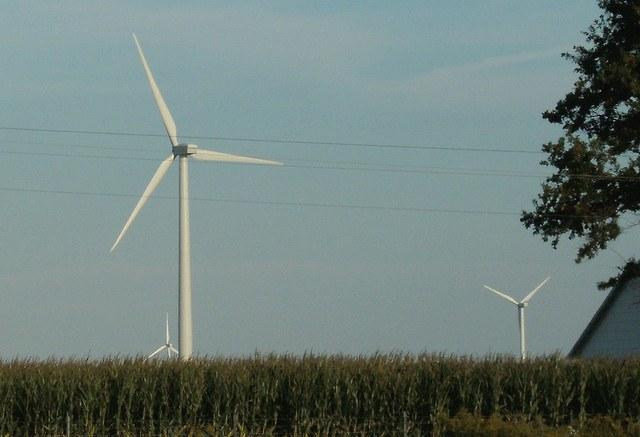

The results of the first comprehensive survey of Illinois’ clean energy sector found that there are currently 96,875 people employed in the sector throughout the state. That is more than the combined total of people working in real estate or as accountants, and enough to fill Soldier Field in Chicago 1.5 times over. The survey was conducted by BW Research Partnership for Clean Energy Trust in partnership with Environmental Entrepreneurs, The Environmental Law & Policy Center and The Natural Resources Defense Council. An interactive website was created to showcase the survey results.
The Illinois clean energy sector will add its 100,000th worker in 2014, according to projected growth rates. Forty percent of Illinois clean energy businesses surveyed plan to hire more workers in 2014, a pace that equates to a job growth rate of 9 percent. Companies working in renewable energy made up 21 percent of the clean energy businesses in Illinois, while 62 percent of clean energy businesses in the state are mainly focused on energy efficiency, including low energy lighting, heating and cooling controls, and smart grid technology.
Illinois efficiency standards require that utilities reduce electricity demand by 2 percent each year but spend less than 2.015 percent of rates paid by customers on efficiency projects. Illinois is the No. 1 state in the U.S. for green buildings.
This latest survey underscores Illinois' position as a leader in clean energy. The state ranks eighth in the 2013 U.S. Clean Tech Leadership Index of states with the strongest policies for reducing environmental footprints. It is in the top 10 for energy efficiency leadership for the first time in 2013, which the report attributes to utility efficiency standards that went into effect in 2008. Illinois is also at the forefront of energy storage technology development. The Joint Center for Energy Storage Research (JCESR), a U.S. DOE supported $120 million public-private partnership in the Argonne National Laboratory in Lemont, Ill., is developing next-generation batteries.
Illinois also leads in wind power. The survey found that in Illinois wind businesses are 41 percent bigger than the average solar firm. Wind farms in Illinois generate enough electricity to power 750,000 homes, and the state ranks fourth for total megawatts installed, according to the American Wind Energy Association (AWEA). Illinois also ranks fourth for both the number of utility scale wind turbines and the number of wind-related jobs. Earlier this month, Ikea announced its investment in a 98 megawatt wind farm in Hoopeston, Ill. The wind farm will generate enough enough electricity to power almost 39,000 average Illinois homes, or 18 percent of the electricity used by Ikea Group worldwide.
Illinois’ renewable portfolio standard (RPS) requires that by 2025 at least 25 percent of the electricity supply comes from clean energy. There are challenges to the implementation of the RPS due to changes in the structure of the state’s energy market, and on-again, off-again tax incentives have made renewable energy investors wary, the survey found. However, the survey respondents cited maintaining a strong RPS as the top area of importance in terms of growing their clean energy businesses in Illinois.
The clean energy sector in Illinois provides good jobs. More than a third, 35 percent, of clean energy jobs are in engineering, research, manufacturing and assembly, and many are in STEM careers (science, technology, mathematics and engineering). Clean jobs are in demand, as the survey results show. More than half of employers said they found it difficult or very difficult to fill new clean energy positions over the last 12 months.
Image credit: Scott WilcoxsonChina's Coal Boom is Waning With Ambitious Reductions Targets


China is the world's largest energy consumer and leading carbon dioxide emitter. Last year, coal accounted for a staggering 65 percent of its energy consumption, and China accounts for half of global coal consumption, according to a new Greenpeace report. Its coal use and emissions grew by an average of 9 percent from 2000 to 2010, but this trend has taken a dramatic twist in the last few years, as China takes on new coal reduction targets. If achieved, these targets can help curb global carbon emissions and fuel renewable energy development.
New coal control measures
In China, 12 of 34 provinces that account for 44 percent of all coal use are implementing coal-control measures -- including a 50 percent reduction target for Beijing by 2017 over 2012 levels, according to the Greenpeace report entitled, “The End of China’s Coal Boom." This is an ambitious goal because 11 of the 12 provinces have experienced a rapid increase in coal use until very recently. If realized, the coal-control measures will result in a 350 million ton reduction in coal consumption by 2017.
China's coal use growth rate falls
Although not widely known, the growth of coal consumption in China has slowed down since 2011 in most provinces and grew by a mere 2.6 to 3 percent in from 2011 to 2013, according to the Greenpeace report. Although this figure may still sound daunting, consider that Chinese coal consumption grew by 19.2 percent in 2003 and 9.4 percent in 2010. China's coal reduction targets will only help fortify this downward trend.
Renewable energy fills in the gap
As China's coal use wanes, its renewable energy capacity has been expanding rapidly according to the 2013 “Who’s Winning the Clean Energy Race?” report, conducted by Pew Charitable Trusts. China attracted $54 billion in renewable energy investment in 2013 and was the global leader in wind energy investment, with 38 percent of the global total; it now has the largest clean energy capacity at 191 GW. China has also set ambitious 2014 goals of bringing 14 GW of new solar capacity and 18 GW of new wind capacity online.
A switch away from coal to renewable energy in China will impact global renewable energy markets by boosting both demand and supply. With a market as big as China, this can have a major impact on the oversupply that has occurred in the solar manufacturing segment, coupled with falling prices. A 20-year solar incentive in China will help create stability in a rapidly shifting market and demonstrates a long-term commitment by the government to support renewable energy growth.
High magnitude coal reduction initiative
When considering the impact of these coal reduction goals compared to "business-as-usual," the impact is significant. The European Union realized a 279 million ton reduction of carbon emissions from 1996 levels by 2010. In China, by comparison, the coal reduction targets if achieved will result in a 699 million ton reduction in carbon emissions by 2017. China's targeted coal reduction will occur within the timeframe of 2013 to 2017, thus being very rapid.
What's the rush?
Climate change-fueled storms and rising sea level has cost China $2.6 billion in 2013. According to the State Oceanic Administration (SOA), sea levels have risen 2.9 millimeters on average in China since 1980, which is faster than the global average. Rising sea levels can threaten mega-cities such as Tianhin, Shanghai and Guanzhou. There are plans to reduce the harm from this by building submerged breakwater construction and solidifying embankments in vulnerable areas, while carbon emissions goals help prevent the problem overall.
Image credit: News24x7.co (upper photo) and Solar Service Inc. (lower photo)
Sarah Lozanova is a regular contributor to environmental and energy publications and websites, including Mother Earth Living, Green Building & Design, Triple Pundit, Urban Farm, and Solar Today. Her experience includes work with small-scale solar energy installations and utility-scale wind farms. She earned an MBA in sustainable management from the Presidio Graduate School and she resides in Belfast Cohousing & Ecovillage in Midcoast Maine with her husband and two children.
Why Corporate Philanthropy Is a Key to Employee Engagement
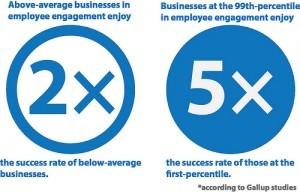

By Adam Weinger
We’ll get right to it: Studies have shown that companies with engaged employees outperform those without by more than 200 percent. Two hundred percent!
Forbes recently published an article that said engaged employees are better producers, more committed to the organization, and are in their career with long-term ambitions. The article went on to cite an employee engagement study: “Level of engagement was more important in achieving good performance than good performance was in creating better engagement.”
Put simply, employees who are engaged in their work do better work.
Traits of engaged employees: A snapshot
- Enthusiasm: Employees are enthusiastic about their job, the company, and the company's mission.
- Inspired and motivated: Employees are motivated to work hard and effectively, and inspired by the company to make their community a better place.
- Empowered: Employees feel empowered by their colleagues and supervisors to take on meaningful roles within the company.
- Confidence: Employees have confidence that their work is making a difference.
What drives employee engagement?
People, passion and values are behind employee happiness. Yes, of course, salaries and benefits are right up there, but in the long run, people stick around when they’re proud to work for a company and passionate about the mission.
An employee’s perception of the organization’s value is an important driver of employee engagement. Corporate philanthropy -- the act of a corporation or business promoting the welfare of others, often through charitable donations -- can help companies show their employees they care and have shared values.
Corporate philanthropy programs
Matching gift and volunteer grant programsWhen companies give back to local nonprofit organizations and charities, employees can see support for causes close to their hearts. Programs that include charitable matching gifts, or allow employees to volunteer with local nonprofit organizations and earn grant money for said charities, go a long way with employees who are interested in making a difference.
According to Charity Navigator, nearly 72 percent of all charitable giving in 2012 came from individuals -- this totals $223 billion and exemplifies the interest of individuals in contributing to their favorite causes and the ones they hold dear to their hearts. When employers offer these types of programs, an employee’s donation can literally be doubled. These individuals will donate whether or not their employers offer programs like these, but when available, donors will be happy to take advantage them.
Charitable event fundraising matches
Another form of corporate giving that many companies offer are grants for fundraising efforts (events and the like). Not only do these make employees happy, but they also benefit corporations, and undoubtedly nonprofit organizations.
- Employees have an enjoyable and rewarding team-building experience with events like walks, runs or bike events.
- The corporation gives back to the community and enhances its image and reputation.
- Nonprofits receive volunteer support and/or additional funds.
Overall, engaged employees are better workers, and companies can be a catalyzing factor in this behavior. By partaking in corporate philanthropy and offering charitable giving programs, corporations allow their employees to be proud of the work their employer does as a company, and also the work it does for the community.
Image credit: Better Works Inc, Flickr
Adam Weinger is the President of Double the Donation, a company focused on helping nonprofits increase the amount of money they raise from corporate matching gift and volunteer grant programs. Follow Double the Donation on Twitter or LinkedIn.
NASA celebrates Earth Day with #GlobalSelfie


With five NASA missions designed to gather critical data about planet Earth launching to space this year, the US space agency is marking this significant year with a social media campaign – promoting the #GlobalSelfie – as part of its new Earth Right Now initiative.
While NASA satellites constantly look at Earth from space, today – 22 April, Earth Day 2014 - the agency is looking to create an image of Earth from the ground up while also fostering a collection of portraits of the people of Earth.
To do this, the agency is asking people to step outside and take a picture of themselves wherever they are on Earth and then post it to social media using the hashtag #GlobalSelfie.
Once those pictures stream around the world, the individual pictures tagged #GlobalSelfie will be used to create a mosaic image of Earth - a new "Blue Marble" built bit by bit with the photos.
The Earth mosaic image itself and a video using the images will be put together and released in May.
For more information, see here.